The downturn boosted the lunchbox sector, but the uplift proved short-lived and adults are already returning to their old ways. What can tempt them back? Nic Paton reports
The lunchbox category had a golden opportunity and squandered it.
The recession saw consumers reaching for the Tupperware, busily preparing lunchboxes to take to work to save the pennies. Coffee and sandwich chains were panicking that the end of the grab-and-go lunch was nigh.
But, obsessed as they were with the kids' market where consumption is still expanding at a healthy 7.3% [Kantar Worldpanel 52w/e 28 February] retailers and manufacturers largely ignored the grown-ups. Under Jamie's spell, the industry ploughed millions into feeding children with ever-more innovative, healthy snacks and failed almost completely to see the bigger potential in the DIY adult lunch, which dominates the category at 70% share.
As a result, consumption fell by 2.8% [Kantar Worldpanel 52w/e 28 February] among all but schoolchildren as soon as the economic clouds began to lift and consumers returned to the sandwich bars in their droves.
Only last month Subway overtook Tesco as the UK's biggest sandwich retailer by value, giving weight to Greencore Food To Go marketing director Richard Esau's prediction that adult lunchbox occasions are "in decline for the foreseeable future".
"People at the time of the crash went into shock and their habits changed, but it was only temporary," says Esau who has seen growth of own and private-label sandwiches restored.
"From the last quarter of 2008 there was a real dip-off in sales, but by mid-2009 sales were clearly coming back and now we are seeing good growth. I think we will continue to see a decline in adult lunchbox occasions. That will continue for the indefinite future."
So where did it all go wrong? And can deskfasters be tempted back into a £6bn-a- year lunchbox category where overall consumption growth of 0.2% is being propped up solely by the kids?
On the face of it, adults' lack of loyalty has nothing to do with range. On the contrary, lunchbox is a massive category, including everything from sandwich fillings, to confectionery, cakes and bagged snacks, to fruit and yoghurts, as well as drinks. Therein, perhaps, lies the problem.
While mums are prepared to trawl the aisles for kids' lunchbox ingredients, adult consumers shopping for themselves need herding, says Giles Brook, co-founder of healthy snack brand Bear.
He suggests retailers consider block-merchandising adult lunchbox items in one place. "Suppliers and retailers could work together more to market adult lunchboxes," he says. "Often it is not done particularly well and, as a shopper faced with trying to find all the different components you are looking for, you just give up. Mums will often persevere if they are looking for items to go in their kids' lunchboxes because they have to."
Tesco offers a dedicated area on its website to help shoppers buy sandwich ingredients and packed-lunch components, and has done for some time. But it has found it much more difficult to manage in-store although it hasn't ruled out the idea completely.
"We don't at present have any plans for lunchbox zoning. We are, however, always listening to our customers and considering their ideas on how we can improve their shopping trip," says a spokesman.
Brook has already seen evidence of some big grocers trying to bring at least one lunchbox component together in one, easy-to-shop area.
"Healthy snacking, for example, is often littered across lots of different categories," says Brook, which can be as frustrating for suppliers as it is for customers.
He believes there is potential for initiatives to group other related products that would help the lunchbox shopper.
But there are some obvious, practical difficulties to zoning, as Adrian Burton, executive creative director of branding agency Lambie-Nairn, points out.
Different elements of a lunchbox require different storage conditions for a start the most obvious example being chilled fillings for ambient foods, such as bread and wraps.
"You can block-merchandise things, but they need to be natural bedfellows, such as barbecue meats, which all sit in the chiller," says Burton.
"Also, from a logistics perspective, the back end in-store will keep chilled and ambient items separate. Different staff teams are responsible for their own areas in-store and different products have different demand levels."
This makes it more difficult for staff to keep track of stock and keep shelves fully stocked with products that come under several jurisdictions. "You would also have to duplicate items," he adds, to enable consumers to find, say, snacking cheese both in the lunchbox section and the standard cheese aisle further complicating stock management and limiting the number of lines that can be carried.
Alternatively and probably easier to achieve is in-store support and direction for consumers, whether at PoS or on-pack, suggests Allied Bakeries category manager Sarah Neely.
The Kingsmill bread maker would like to see more imaginative cross-promotional activity with cooked meats and other fillings sitting with bread and bread rolls to create an in-store, do-it-yourself sandwich destination.
Lambie-Nairn worked with Sainsbury's on its successful 'Feed your Family for a Fiver' campaign. Menu cards were displayed at the front of stores, but ingredients were generally left in their standard aisles. Burton suggests this approach could work just as well for the lunchbox sector.
"You could have menu cards with the top 50 lunchbox ingredients and tips on how to give a nutritionally balanced meal," he says. "Items could be flagged up in-store with stickers rather than through merchandising."
Merchandising alone will not be enough to restore strong growth in the adult category, agrees Esther Laycock-Smith, group senior product manager at Whitworths.
She sees a failure to keep pace with the innovation seen in children's lunchboxes as the biggest culprit in the sector's decline. "You don't see the same level of innovation, yet adults also want variety," she insists.
Faced with the daunting prospect of adults closing the lid on lunchboxes for good, manufacturers are now scrambling to catch up on the NPD front. Miniaturised and exciting adult lunchbox innovations, such as snacking cheese products, are seen as having significant potential (see box), even if they have been a long time coming.
Mike Miller, senior category manager at Unilever, says retailers need to make more of those brands that are extending their adult ranges in dynamic ways, while focusing on price comparisons with the cut-price lunchtime meal deals that have been cannibalising the sector.
Heavy price promotion on own-label meal deals in the supermarkets drove the 19% sales increase to November 2009 [Kantar], according to Jon Sandy, category controller at Burton's Foods.
"In the past year, we have seen a shift from multibuy promotions to a more heavily price-led approach," he says. "This dependence needs to be managed carefully in the future, so that sales volumes and value remain in line with one another."
Even more reason, then, for retailers to look for brands that are expanding their product line to suit on-the-go eating, says Mike Miller. Not only does it make lunchboxes more appealing, but it adds value to the category as a whole.
Zoning lunchbox ingredients is something that's been thought about in the altogether more inspired kids' food sector for some time.
"One of the things we'd like to talk about with multiples is the creation of a kids' zone, where all kinds of kids' products could be put together. We think that could have huge potential and really work," says Innocent marketing manager Amy Shah.
Retailers have been understandably less charmed by the idea of a food crêche. And why should they bother?
When it comes to younger lunchbox consumers they have had their work largely done for them, after all. Campaigning chefs and picky kids have, in turn, shamed and pestered parents into a weekly trawl of the shopping aisles looking for lunchbox ingredients that meet the criteria for taste, convenience and health (usually in that order).
Giving children a nutritionally balanced lunch was the aim of chef Jamie Oliver's television campaign Jamie's School Dinners, which focused on improving the quality of canteen food.
Bizarrely it did kids' lunchboxes a favour, because while the campaign succeeded in changing government policy, it backfired with many kids, who boycotted the dinner queues.
Last month, health secretary Andrew Lansley suggested Oliver's attempts to improve the quality of lunchtime meals had in fact driven more parents to prepare packed lunches instead. Packed lunches are growing fastest among primary school-aged children, where the first wave of school meal reform started. So expect an even tougher stance on lunchbox contents because, despite a massive public education campaign, there is limited evidence to suggest they are getting substantially healthier.
On the contrary: consumption of crisps, nuts and savoury snacks across all lunchboxes has risen 2.1% compared with the previous year.
Walkers led the lunchbox category promotion for its savoury snacks with an advertising campaign called Walkers Makes Sandwiches More Exciting. Clearly aimed at kids, it featured boyband JLS, Marco Pierre White, Frank Lampard and Jenson Button.
Meanwhile chocolate confectionery has taken a 23% hike [Kantar], although consumption of chocolate biscuit bars in lunchboxes fell 7.8% to 461.6 million occasions. And, despite the plethora of exotic and healthy fillings available, jam remains the favourite sandwich filling for children.
Child or adult, sandwiches are still very much the daddy of the market, appearing in nearly three-quarters of lunchboxes [Kantar], but they're taking the wrap from a number of other bakery products. Manufacturer Mission Foods says sales of branded bakery wraps have risen 33.6% year-on-year [Kantar], with much of this growth coming from new consumers entering the category. The Mission Foods brand is now worth £19m.
There has also been an ongoing switch from bread to rolls white in particular. Kingsmill reports that sales of its rolls have grown 26% by volume and 13% by value year-on-year to May.
Consumers are much more traditional, though, about what they choose to fill them with, presenting both a challenge and an opportunity for adding value to the adult lunchbox category.
Despite all the work that has gone into chilled and ambient food fillings, ham remains the most popular choice, followed by cheese, chicken and then tuna [Kantar]. In the £1.4bn cooked meats category, sandwich meats account for 74% of the market [IRI 52w/e 16 May]. Adult sandwich meats all meats excluding themed slices, such as Dinosaur turkey rolls are the main driver, growing at 4.5% year-on-year, says Daniel McGuigan, category management controller at Bernard Matthews Farms.
Chunky sandwich meats are showing strong growth, although there is also a trend towards smaller packs of cooked meats, particularly £1 price-marked packs.
And that's another worrying trend. While premium adult lunchbox customers have gone back to queuing at the deli, those who remain in the homemade lunchbox category appear to be trading down.
"The long-term trend is for value for money, with many shoppers trading down from premium products," agrees Bernard Matthews' McGuigan. "Although some shoppers bucked this trend by trading up last Christmas, most reverted in the New Year." That said, ready-to-eat meat snacks are growing, up 18% albeit from a small base, he adds.
Peperami remains a popular standby. Almost two thirds of Peperamis are consumed as part of a lunchbox meal, and the Unilever brand has reported a 6% increase in sales year-on-year [Kantar 52w/e May 2010]. The company says Peperami Minis, smaller sticks specifically designed for lunchboxes, have been key to growth.
About half the pastes and spreads sold are used in lunchbox meals, according to Neil Brownbill, marketing director for Princes Foods, manufacturer of the Princes and Shippam's brands.
Recession was a boon for them creating opportunities to attract new consumers to the category. And by and large, they've hung on to them.
"We have been investing heavily in our branded sandwich spreads. Families who buy pastes and spreads often do so for convenience sandwiches containing pastes and spreads are easy to make, tasty and don't go soggy or fall apart," he adds. In June, the company launched a limited-edition spreads range under the brand Favourite Flavours.
Ambient lunch products such as canned tuna and sandwich spreads also benefited from the downturn, as they are seen by shoppers as a low-waste, good-value option, suggests Ruth Simpson, marketing director for Princes Foods.
Among the lunchboxes losers over the past year as adults deserted them and kids' fare grew healthier, have been cakes and pastries. Their consumption fell 5% year-on-year [Kantar 52w/e February 2010], prompting manufacturers to launch several healthier versions of sweet treats in a bid to tick the taste and health boxes for both adults and children.
In January, Premier Foods launched Mr Kipling Oatibakes oat-based cakes in three variants: caramel, strawberry and blackcurrant, designed specifically to tap into the lunchbox market and particularly aim at young consumers.
"With children, what mums are looking for is an empty lunchbox at the end of the day," says Versha Patel, head of category, sweet, at Premier Foods.
"They want to know their kids are eating what they put in it, and that it is nutritious and healthy. If it is just yourself you can afford to be a bit lazy, but not if it is for your kids.
"There has been some trading down to own label in some categories, but people do get bored. They want products that taste good," she adds.
Cakes' loss has been yoghurts and pot desserts' gain. They now feature in 21% of lunchboxes, with the inclusion of yoghurts in packed lunches rising steadily over each of the past three years. It was up 7.3% year -on-year [Kantar], largely due to consumers switching to healthier options.
Jonathan Dee, interim marketing director for chilled yoghurts and pot desserts at Müller Dairy, suggests that yoghurts were one of the beneficiaries from the healthy school food campaign.
"Fresh fruit and yoghurt tend to be replacing crisps and chocolate with some of the transition attributable to the policing of school lunchboxes," he says. "Yoghurt is in 35% of lunchboxes consumed by children under 10, but falls to about 14% in adult lunchboxes."
Neverthless, adults still account for 71% of yoghurts eaten at lunchtime, with men making up a surprisingly high 40% of that. "Part of the challenge for us is to get the number of adult lunchboxes containing a yoghurt to match that of the under-10s," adds Dee.
As well as the launch of new children's variant Müller Stars (see box p47), in February the company unveiled a mini-pot six-pack of Müller Rice intended for the lunchbox market.
Danone also added a single pot version of its Activia yoghurt (as opposed to a multipack) in October to boost its appeal to younger consumers who buy their lunch on the day rather than in advance.
Meanwhile, Premier Foods expanded its Hartley's portfolio in June with a Pineapple in Lemon & Lime Jelly variant added to the Frujies range, an Apple & Pear SKU joining its Low Calorie Jelly range and a Cherries in Cherry Jelly SKU added to the Fruit in Jelly range.
The government ban on sweetened fizzy drinks in school was a massive boost to innovation in the lunchbox market and resulted in the launch of a host of drinks that meet the criteria for school lunches, such as Ribena's Juiced Up.
It also helped to boost flavoured milks in general, with value sales up 14% [Nielsen 52w/e 15 May]. Some 70% of this increase was through branded drinks such as Yazoo and Frijj, says Marielle de Jong, marketing director of FrieslandCampina, which makes Yazoo.
The company is running a £4.5m campaign this year to raise its profile further, with activity including an on-pack promotion to download MP3s during next month.
She argues that milk drinks have not succeeded simply by virtue of being healthy.
"For example, when we changed our Yazoo milkshake recipe in 2008 we were worried what kids would think. But it came across very well in the taste tests. The health and wellness argument is not good enough on its own."
There are some in the industry Jon Sandy at Burton's Foods among them who believe that health, which was overshadowed by value during recession, will come to the fore again in both adult and children's lunchbox markets as the economy picks up.
For now, though, value still appears to driving the category, with retailers and suppliers promoting hard in a bid to try to keep the dwindling number of adult consumers that they have left.
Is it a vicious circle? FrieslandCampina's Marielle de Jong thinks so.
"Flavoured milks and soft drinks are highly promotionally driven," says de Jong. "We have even talked about going to £1 for a four-pack, but it is not fruit juice or water, it is milk and it is a high-value raw material. We do not want simply to be driving the price down lower all the time and go into all those deep promotions."
She would rather work with retailers to pursue those premium-spending adults to the sandwich bars and tempt them back with something more inspiring than a ham sandwich.
If suppliers and retailers can crack the lunchbox trinity of convenience, taste and health, Tupperware could yet be back in fashion.
Focus On Lunchbox
The lunchbox category had a golden opportunity and squandered it.
The recession saw consumers reaching for the Tupperware, busily preparing lunchboxes to take to work to save the pennies. Coffee and sandwich chains were panicking that the end of the grab-and-go lunch was nigh.
But, obsessed as they were with the kids' market where consumption is still expanding at a healthy 7.3% [Kantar Worldpanel 52w/e 28 February] retailers and manufacturers largely ignored the grown-ups. Under Jamie's spell, the industry ploughed millions into feeding children with ever-more innovative, healthy snacks and failed almost completely to see the bigger potential in the DIY adult lunch, which dominates the category at 70% share.
As a result, consumption fell by 2.8% [Kantar Worldpanel 52w/e 28 February] among all but schoolchildren as soon as the economic clouds began to lift and consumers returned to the sandwich bars in their droves.
Only last month Subway overtook Tesco as the UK's biggest sandwich retailer by value, giving weight to Greencore Food To Go marketing director Richard Esau's prediction that adult lunchbox occasions are "in decline for the foreseeable future".
"People at the time of the crash went into shock and their habits changed, but it was only temporary," says Esau who has seen growth of own and private-label sandwiches restored.
"From the last quarter of 2008 there was a real dip-off in sales, but by mid-2009 sales were clearly coming back and now we are seeing good growth. I think we will continue to see a decline in adult lunchbox occasions. That will continue for the indefinite future."
So where did it all go wrong? And can deskfasters be tempted back into a £6bn-a- year lunchbox category where overall consumption growth of 0.2% is being propped up solely by the kids?
On the face of it, adults' lack of loyalty has nothing to do with range. On the contrary, lunchbox is a massive category, including everything from sandwich fillings, to confectionery, cakes and bagged snacks, to fruit and yoghurts, as well as drinks. Therein, perhaps, lies the problem.
While mums are prepared to trawl the aisles for kids' lunchbox ingredients, adult consumers shopping for themselves need herding, says Giles Brook, co-founder of healthy snack brand Bear.
He suggests retailers consider block-merchandising adult lunchbox items in one place. "Suppliers and retailers could work together more to market adult lunchboxes," he says. "Often it is not done particularly well and, as a shopper faced with trying to find all the different components you are looking for, you just give up. Mums will often persevere if they are looking for items to go in their kids' lunchboxes because they have to."
Tesco offers a dedicated area on its website to help shoppers buy sandwich ingredients and packed-lunch components, and has done for some time. But it has found it much more difficult to manage in-store although it hasn't ruled out the idea completely.
"We don't at present have any plans for lunchbox zoning. We are, however, always listening to our customers and considering their ideas on how we can improve their shopping trip," says a spokesman.
Brook has already seen evidence of some big grocers trying to bring at least one lunchbox component together in one, easy-to-shop area.
"Healthy snacking, for example, is often littered across lots of different categories," says Brook, which can be as frustrating for suppliers as it is for customers.
He believes there is potential for initiatives to group other related products that would help the lunchbox shopper.
But there are some obvious, practical difficulties to zoning, as Adrian Burton, executive creative director of branding agency Lambie-Nairn, points out.
Different elements of a lunchbox require different storage conditions for a start the most obvious example being chilled fillings for ambient foods, such as bread and wraps.
"You can block-merchandise things, but they need to be natural bedfellows, such as barbecue meats, which all sit in the chiller," says Burton.
"Also, from a logistics perspective, the back end in-store will keep chilled and ambient items separate. Different staff teams are responsible for their own areas in-store and different products have different demand levels."
This makes it more difficult for staff to keep track of stock and keep shelves fully stocked with products that come under several jurisdictions. "You would also have to duplicate items," he adds, to enable consumers to find, say, snacking cheese both in the lunchbox section and the standard cheese aisle further complicating stock management and limiting the number of lines that can be carried.
Alternatively and probably easier to achieve is in-store support and direction for consumers, whether at PoS or on-pack, suggests Allied Bakeries category manager Sarah Neely.
The Kingsmill bread maker would like to see more imaginative cross-promotional activity with cooked meats and other fillings sitting with bread and bread rolls to create an in-store, do-it-yourself sandwich destination.
Lambie-Nairn worked with Sainsbury's on its successful 'Feed your Family for a Fiver' campaign. Menu cards were displayed at the front of stores, but ingredients were generally left in their standard aisles. Burton suggests this approach could work just as well for the lunchbox sector.
"You could have menu cards with the top 50 lunchbox ingredients and tips on how to give a nutritionally balanced meal," he says. "Items could be flagged up in-store with stickers rather than through merchandising."
Merchandising alone will not be enough to restore strong growth in the adult category, agrees Esther Laycock-Smith, group senior product manager at Whitworths.
She sees a failure to keep pace with the innovation seen in children's lunchboxes as the biggest culprit in the sector's decline. "You don't see the same level of innovation, yet adults also want variety," she insists.
Faced with the daunting prospect of adults closing the lid on lunchboxes for good, manufacturers are now scrambling to catch up on the NPD front. Miniaturised and exciting adult lunchbox innovations, such as snacking cheese products, are seen as having significant potential (see box), even if they have been a long time coming.
Mike Miller, senior category manager at Unilever, says retailers need to make more of those brands that are extending their adult ranges in dynamic ways, while focusing on price comparisons with the cut-price lunchtime meal deals that have been cannibalising the sector.
Heavy price promotion on own-label meal deals in the supermarkets drove the 19% sales increase to November 2009 [Kantar], according to Jon Sandy, category controller at Burton's Foods.
"In the past year, we have seen a shift from multibuy promotions to a more heavily price-led approach," he says. "This dependence needs to be managed carefully in the future, so that sales volumes and value remain in line with one another."
Even more reason, then, for retailers to look for brands that are expanding their product line to suit on-the-go eating, says Mike Miller. Not only does it make lunchboxes more appealing, but it adds value to the category as a whole.
Zoning lunchbox ingredients is something that's been thought about in the altogether more inspired kids' food sector for some time.
"One of the things we'd like to talk about with multiples is the creation of a kids' zone, where all kinds of kids' products could be put together. We think that could have huge potential and really work," says Innocent marketing manager Amy Shah.
Retailers have been understandably less charmed by the idea of a food crêche. And why should they bother?
When it comes to younger lunchbox consumers they have had their work largely done for them, after all. Campaigning chefs and picky kids have, in turn, shamed and pestered parents into a weekly trawl of the shopping aisles looking for lunchbox ingredients that meet the criteria for taste, convenience and health (usually in that order).
Giving children a nutritionally balanced lunch was the aim of chef Jamie Oliver's television campaign Jamie's School Dinners, which focused on improving the quality of canteen food.
Bizarrely it did kids' lunchboxes a favour, because while the campaign succeeded in changing government policy, it backfired with many kids, who boycotted the dinner queues.
Last month, health secretary Andrew Lansley suggested Oliver's attempts to improve the quality of lunchtime meals had in fact driven more parents to prepare packed lunches instead. Packed lunches are growing fastest among primary school-aged children, where the first wave of school meal reform started. So expect an even tougher stance on lunchbox contents because, despite a massive public education campaign, there is limited evidence to suggest they are getting substantially healthier.
On the contrary: consumption of crisps, nuts and savoury snacks across all lunchboxes has risen 2.1% compared with the previous year.
Walkers led the lunchbox category promotion for its savoury snacks with an advertising campaign called Walkers Makes Sandwiches More Exciting. Clearly aimed at kids, it featured boyband JLS, Marco Pierre White, Frank Lampard and Jenson Button.
Meanwhile chocolate confectionery has taken a 23% hike [Kantar], although consumption of chocolate biscuit bars in lunchboxes fell 7.8% to 461.6 million occasions. And, despite the plethora of exotic and healthy fillings available, jam remains the favourite sandwich filling for children.
Child or adult, sandwiches are still very much the daddy of the market, appearing in nearly three-quarters of lunchboxes [Kantar], but they're taking the wrap from a number of other bakery products. Manufacturer Mission Foods says sales of branded bakery wraps have risen 33.6% year-on-year [Kantar], with much of this growth coming from new consumers entering the category. The Mission Foods brand is now worth £19m.
There has also been an ongoing switch from bread to rolls white in particular. Kingsmill reports that sales of its rolls have grown 26% by volume and 13% by value year-on-year to May.
Consumers are much more traditional, though, about what they choose to fill them with, presenting both a challenge and an opportunity for adding value to the adult lunchbox category.
Despite all the work that has gone into chilled and ambient food fillings, ham remains the most popular choice, followed by cheese, chicken and then tuna [Kantar]. In the £1.4bn cooked meats category, sandwich meats account for 74% of the market [IRI 52w/e 16 May]. Adult sandwich meats all meats excluding themed slices, such as Dinosaur turkey rolls are the main driver, growing at 4.5% year-on-year, says Daniel McGuigan, category management controller at Bernard Matthews Farms.
Chunky sandwich meats are showing strong growth, although there is also a trend towards smaller packs of cooked meats, particularly £1 price-marked packs.
And that's another worrying trend. While premium adult lunchbox customers have gone back to queuing at the deli, those who remain in the homemade lunchbox category appear to be trading down.
"The long-term trend is for value for money, with many shoppers trading down from premium products," agrees Bernard Matthews' McGuigan. "Although some shoppers bucked this trend by trading up last Christmas, most reverted in the New Year." That said, ready-to-eat meat snacks are growing, up 18% albeit from a small base, he adds.
Peperami remains a popular standby. Almost two thirds of Peperamis are consumed as part of a lunchbox meal, and the Unilever brand has reported a 6% increase in sales year-on-year [Kantar 52w/e May 2010]. The company says Peperami Minis, smaller sticks specifically designed for lunchboxes, have been key to growth.
About half the pastes and spreads sold are used in lunchbox meals, according to Neil Brownbill, marketing director for Princes Foods, manufacturer of the Princes and Shippam's brands.
Recession was a boon for them creating opportunities to attract new consumers to the category. And by and large, they've hung on to them.
"We have been investing heavily in our branded sandwich spreads. Families who buy pastes and spreads often do so for convenience sandwiches containing pastes and spreads are easy to make, tasty and don't go soggy or fall apart," he adds. In June, the company launched a limited-edition spreads range under the brand Favourite Flavours.
Ambient lunch products such as canned tuna and sandwich spreads also benefited from the downturn, as they are seen by shoppers as a low-waste, good-value option, suggests Ruth Simpson, marketing director for Princes Foods.
Among the lunchboxes losers over the past year as adults deserted them and kids' fare grew healthier, have been cakes and pastries. Their consumption fell 5% year-on-year [Kantar 52w/e February 2010], prompting manufacturers to launch several healthier versions of sweet treats in a bid to tick the taste and health boxes for both adults and children.
In January, Premier Foods launched Mr Kipling Oatibakes oat-based cakes in three variants: caramel, strawberry and blackcurrant, designed specifically to tap into the lunchbox market and particularly aim at young consumers.
"With children, what mums are looking for is an empty lunchbox at the end of the day," says Versha Patel, head of category, sweet, at Premier Foods.
"They want to know their kids are eating what they put in it, and that it is nutritious and healthy. If it is just yourself you can afford to be a bit lazy, but not if it is for your kids.
"There has been some trading down to own label in some categories, but people do get bored. They want products that taste good," she adds.
Cakes' loss has been yoghurts and pot desserts' gain. They now feature in 21% of lunchboxes, with the inclusion of yoghurts in packed lunches rising steadily over each of the past three years. It was up 7.3% year -on-year [Kantar], largely due to consumers switching to healthier options.
Jonathan Dee, interim marketing director for chilled yoghurts and pot desserts at Müller Dairy, suggests that yoghurts were one of the beneficiaries from the healthy school food campaign.
"Fresh fruit and yoghurt tend to be replacing crisps and chocolate with some of the transition attributable to the policing of school lunchboxes," he says. "Yoghurt is in 35% of lunchboxes consumed by children under 10, but falls to about 14% in adult lunchboxes."
Neverthless, adults still account for 71% of yoghurts eaten at lunchtime, with men making up a surprisingly high 40% of that. "Part of the challenge for us is to get the number of adult lunchboxes containing a yoghurt to match that of the under-10s," adds Dee.
As well as the launch of new children's variant Müller Stars (see box p47), in February the company unveiled a mini-pot six-pack of Müller Rice intended for the lunchbox market.
Danone also added a single pot version of its Activia yoghurt (as opposed to a multipack) in October to boost its appeal to younger consumers who buy their lunch on the day rather than in advance.
Meanwhile, Premier Foods expanded its Hartley's portfolio in June with a Pineapple in Lemon & Lime Jelly variant added to the Frujies range, an Apple & Pear SKU joining its Low Calorie Jelly range and a Cherries in Cherry Jelly SKU added to the Fruit in Jelly range.
The government ban on sweetened fizzy drinks in school was a massive boost to innovation in the lunchbox market and resulted in the launch of a host of drinks that meet the criteria for school lunches, such as Ribena's Juiced Up.
It also helped to boost flavoured milks in general, with value sales up 14% [Nielsen 52w/e 15 May]. Some 70% of this increase was through branded drinks such as Yazoo and Frijj, says Marielle de Jong, marketing director of FrieslandCampina, which makes Yazoo.
The company is running a £4.5m campaign this year to raise its profile further, with activity including an on-pack promotion to download MP3s during next month.
She argues that milk drinks have not succeeded simply by virtue of being healthy.
"For example, when we changed our Yazoo milkshake recipe in 2008 we were worried what kids would think. But it came across very well in the taste tests. The health and wellness argument is not good enough on its own."
There are some in the industry Jon Sandy at Burton's Foods among them who believe that health, which was overshadowed by value during recession, will come to the fore again in both adult and children's lunchbox markets as the economy picks up.
For now, though, value still appears to driving the category, with retailers and suppliers promoting hard in a bid to try to keep the dwindling number of adult consumers that they have left.
Is it a vicious circle? FrieslandCampina's Marielle de Jong thinks so.
"Flavoured milks and soft drinks are highly promotionally driven," says de Jong. "We have even talked about going to £1 for a four-pack, but it is not fruit juice or water, it is milk and it is a high-value raw material. We do not want simply to be driving the price down lower all the time and go into all those deep promotions."
She would rather work with retailers to pursue those premium-spending adults to the sandwich bars and tempt them back with something more inspiring than a ham sandwich.
If suppliers and retailers can crack the lunchbox trinity of convenience, taste and health, Tupperware could yet be back in fashion.
Focus On Lunchbox







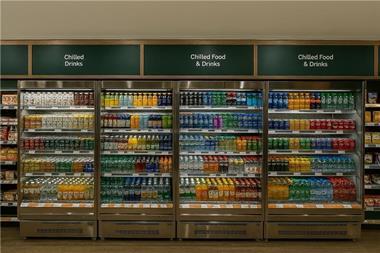

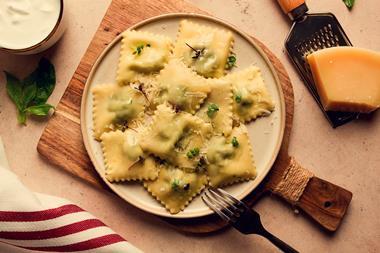

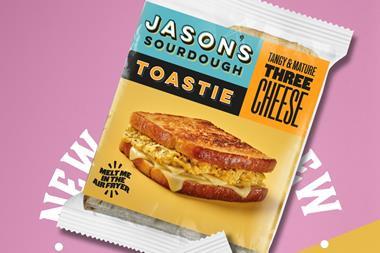
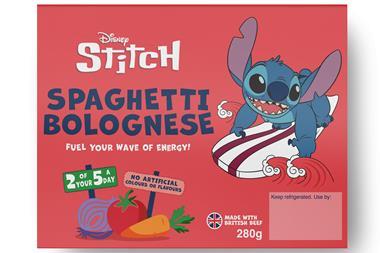
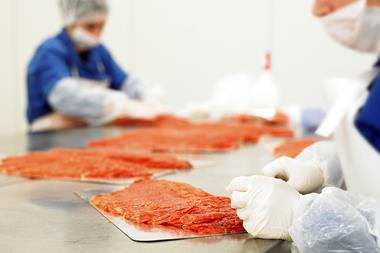





No comments yet